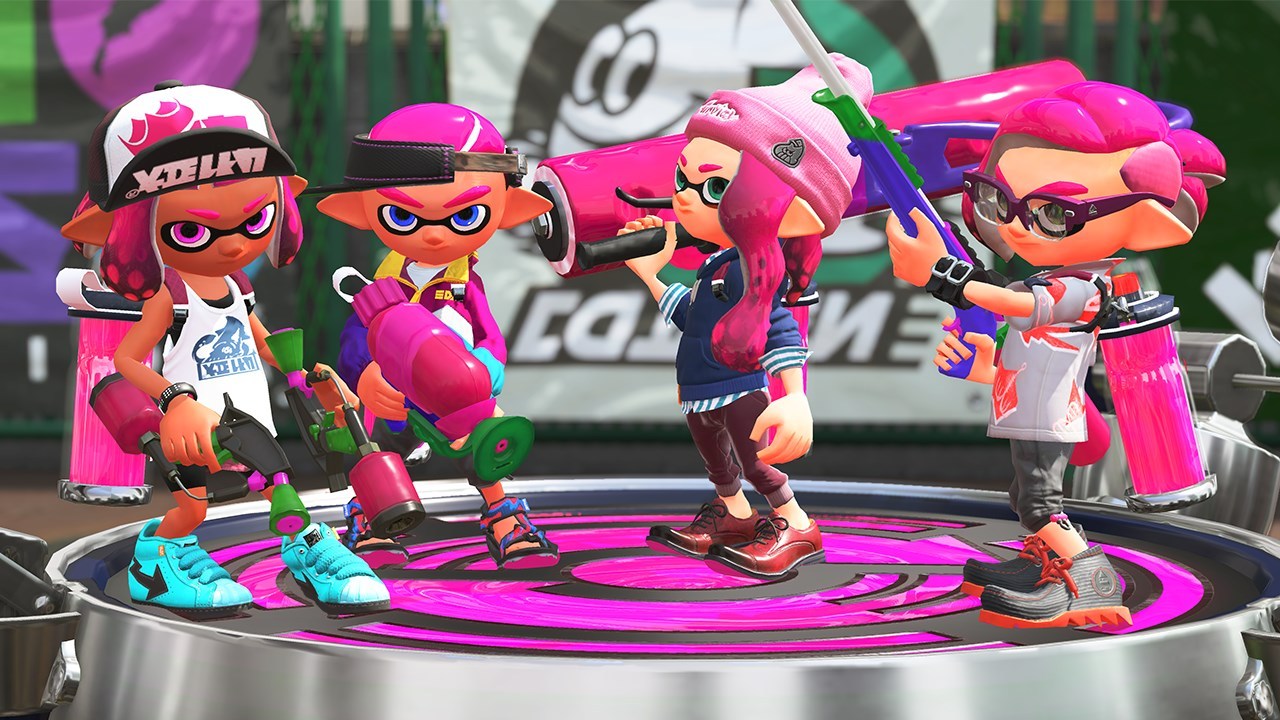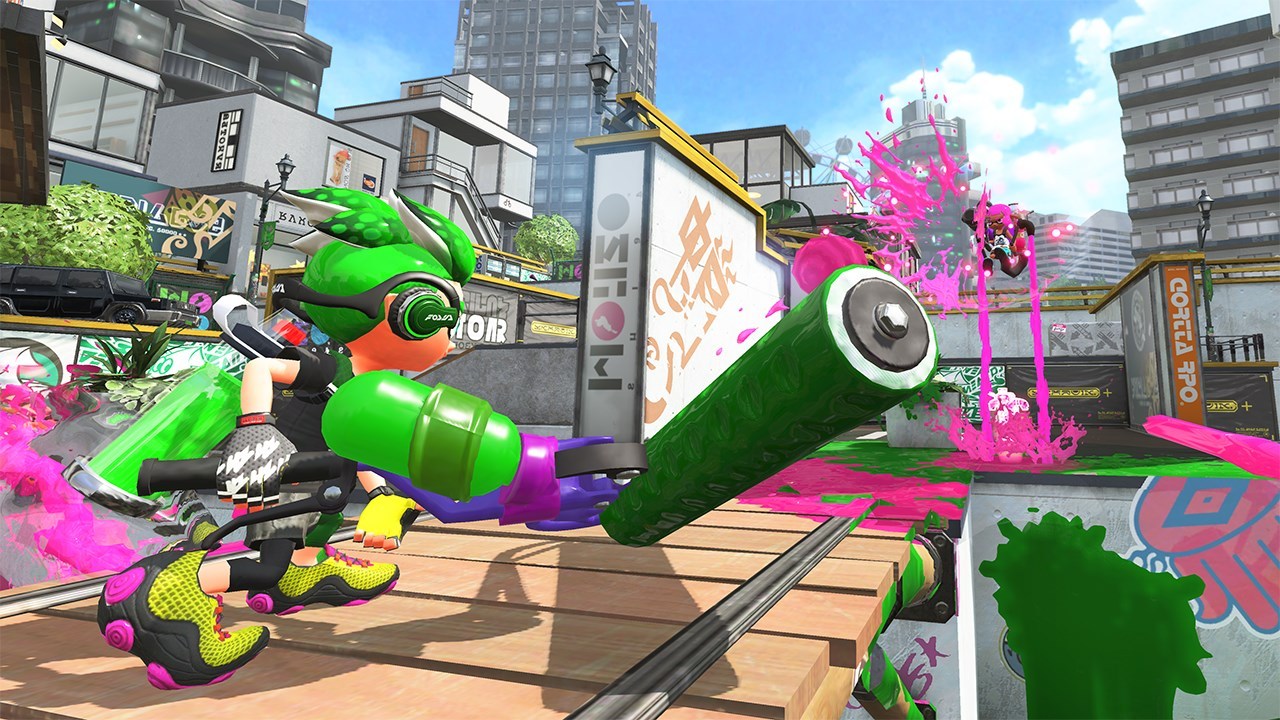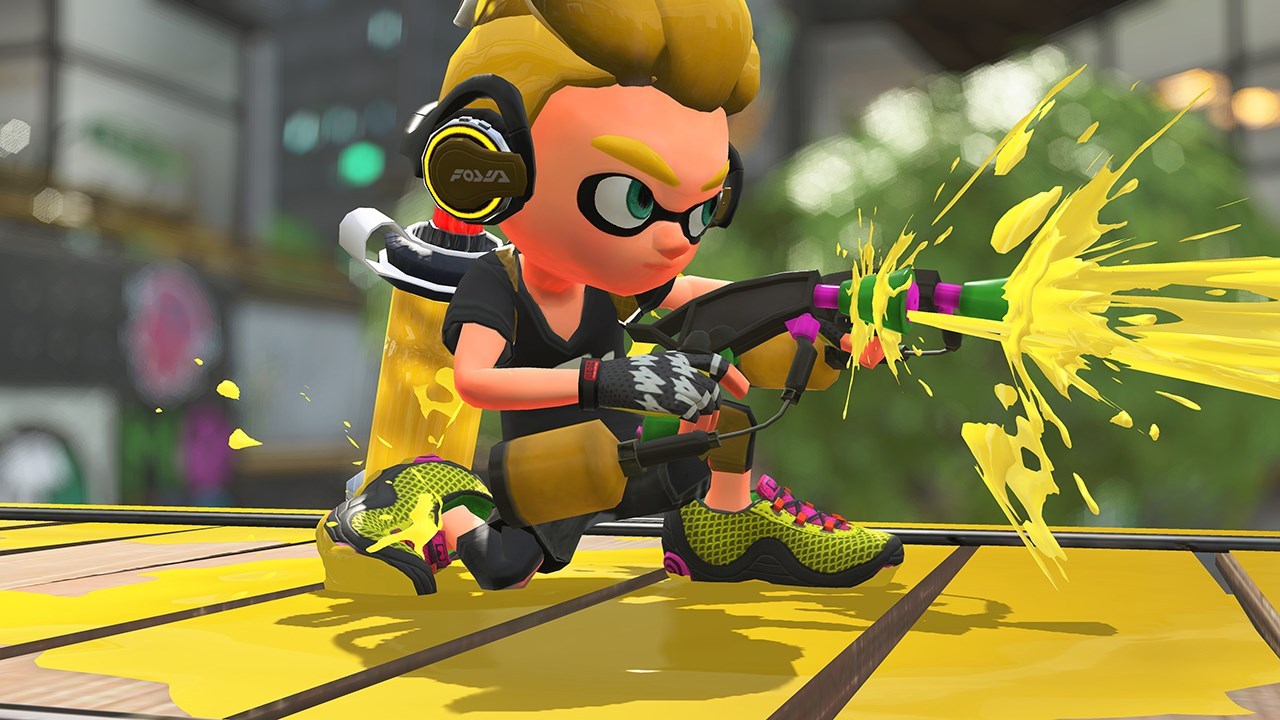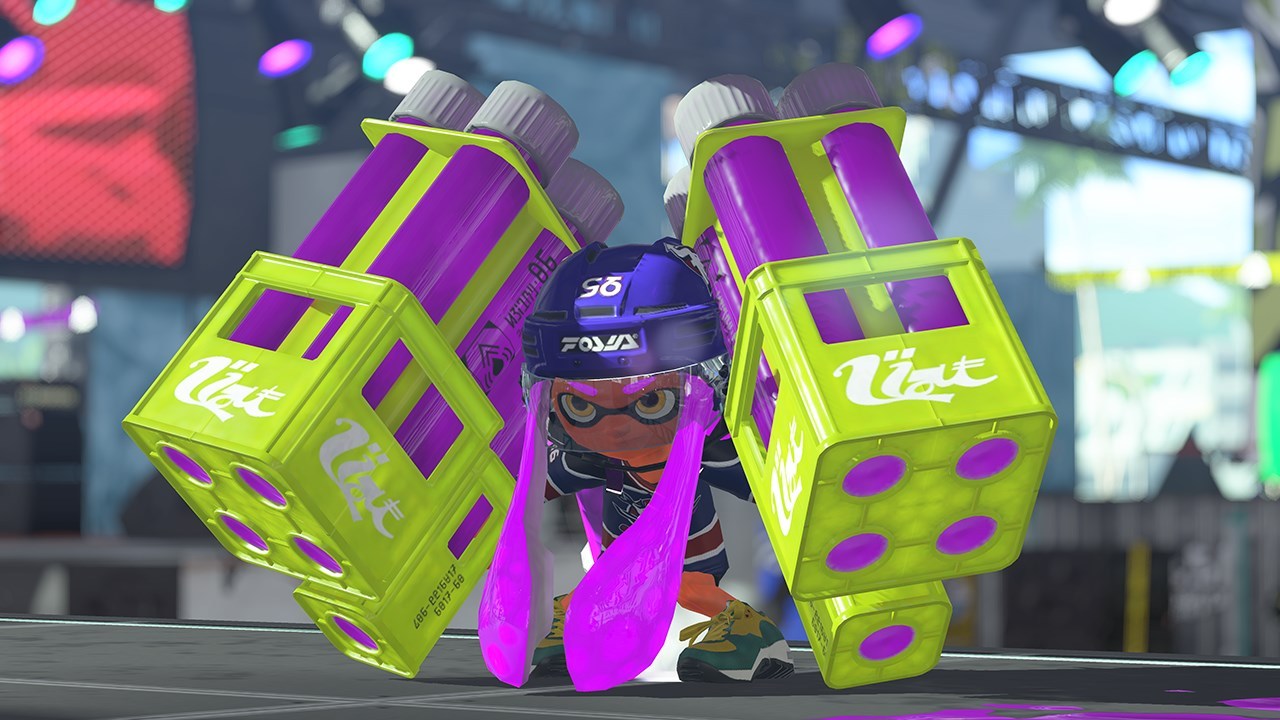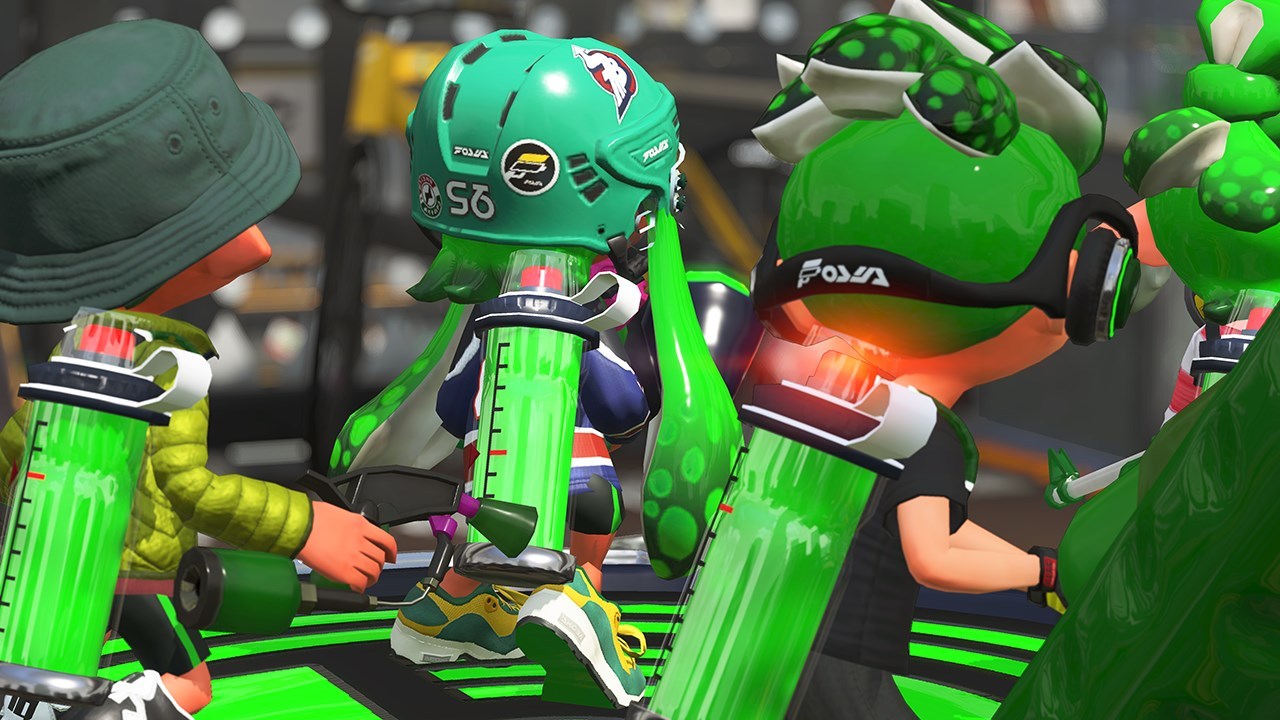Platform:
Nintendo Switch
Released:
July 21, 2017
Publisher:
Nintendo
Developer:
Nintendo Entertainment Planning & Development
Not known for their online multiplayer prowess, Splatoon on the Wii U showed that Nintendo, while not having the most fantastic infrastructure, knew what made competitive team-based multiplayer fun in the first place. Splatting coloured ink all over the map (and your opponents) in an effort to cover the most territory is ingenious when you think about it, and with Nintendo Switch still in its first year, there’s no better time to revisit the franchise than with Splatoon 2.

What makes Splatoon 2 so fun is its simplicity, with easy-to-understand goals that make sense as soon as you start your first 3-minute Turf War, the game’s core mode. It becomes a battle for zones that constantly shifts as you push your opponents backward, and sneaking into the enemy territory makes for some epic last-second victories and momentum that swings back and forth between teams like an inky pendulum. You must turn to squid form and swim through your own colour ink to replenish your ammo, so knowing where to retreat to and the key spots to target makes sure that every battle feels unique.
The maps rotate every two hours across the main modes of play, which is just long enough for you to get used to them but changes with a frequency that keeps the game interesting. I put hundreds of hours into the first Splatoon, and I have to say that the maps themselves feel more memorable this time around, well set out with choke-points, bottle-necks, competitive hot zones and plenty of different levels of verticality to allow for tactics.
Weapons are varied, with many making their return and a couple of new ones for good measure. The Splat Dualies are a pair of pistols which allow you to roll and dodge out of harm’s way, but I often did resort to my previous favourite the Splat Roller, which works incredibly well at close range (the shotgun equivalent in this world, always my go-to in multiplayer shooters). You can also change your outfit to acquire abilities like being able to swim faster through ink, use less ammo and so on.
Some of these are randomised as you level up your gear, but everything is useful, even if it’s not the exact result you were hoping for. Nice touches like being able to order gear that you’ve seen on other players in-game or by stocking up on abilities through one of the stores to be used later means players who want the perfect combination can work towards that goal; at a price, of course. This form of progression for players looking to make a mark in Ranked Battles and League Battles is a very welcome addition, sure to separate the Ink-novices from the Ink-masters.
(It’s worth noting that I haven’t been able to experience much of the modes within Ranked, Tower Control and Rainmaker, as the game hasn’t been populated enough yet to try it out during my time reviewing it).
” Everything looks bolder and brighter… it’s easy to get swept up in the quirky fun vibe.”
The single player campaign makes its welcome return in Splatoon 2 and is the perfect place to start to learn mechanics, try out the range of weapons and get familiar with splatting. Levels aren’t particularly challenging, but that’s not to say I didn’t enjoy myself. Shooting switches, moving platforms and grinding from area to area while splatting disposable foes makes for a nice introduction, with level design and bosses that don’t feel too far removed from the Mario games.
Salmon Run is the new game mode on everyone’s mind, and it’s a big success. It is Splatoon 2’s version of horde mode, and it’s fully fleshed out with wave after wave of enemies, golden eggs to collect, bosses with well-guarded weak-spots and plenty of challenges for a team of four players. It’s no pushover, requiring teamwork and communication from your squad to conquer it effectively. Weapons are randomised, always keeping you on your toes, and the conditions on the battlefield shift differently with each game, so it never gets old. I loved the variety and it provides a nice point of difference from Turf Wars.
Strangely, it’s only available online at certain times during special events, unless you’re playing it via local co-op. To put such a successful game mode behind a “limited time” wall like this is odd, although reminiscent of the rotating events you might find in something like Overwatch.
Splatoon 2 is colourful and vibrant on the Nintendo Switch, with a lot more detail having been invested this time around. Everything looks bolder and brighter, still emphasized by the audacious soundtrack that pumps through during matches and thumps in the background in the game’s hub. With the tongue-in-cheek characters all repeating how important it is for you to stay fresh, it’s easy to get swept up in the quirky fun vibe. Pearl and Marina are also worth pointing out as the most iconic hosts ever. They’re sarcastic, silly and just the right level of sass that keep me chuckling whenever they are on screen.
Online functionality is ultimately where Nintendo stumbles again. The Nintendo Switch app is supposed to make things easier but ultimately doesn’t simplify things any more than using a third-party app to talk to your friends. I do like the access to statistics and information on Splatfests that’s available in my pocket, but with no way to communicate with friends properly through the Switch itself, it’s convoluted at best. I’m hoping this gets rectified with future updates, because the concept of the app is fine; it’s just not there yet.

Lobbies also “lock you in” when you join them and wait for players to fill your game, with no way to exit them unless you wait for them to time out for two minutes or reset your console. You also can’t change your loadout easily between matches if you just want to play with the same group again (which, with a good group or with competitive, stable matches, why would you want to try and find a new one?). You have to leave the game, change your weapons and gear and then load back into the lobby. You also can’t queue with friends unless you’re a full team of four.
Decisions like these frustrate, taking away from what is otherwise such a well thought-out gameplay experience. I will say that Splatoon on Wii U was supported constantly over its lifetime with a lot of free additional content, which bodes well. And with no other real multiplayer shooter alternatives at this point on the Switch, it’s likely that this sequel will stay populated for quite some time.
Positive:
- Tactical, addictive and fun
- Splatting remains brilliant
- Salmon Run a fantastic addition
- Bold and bright aesthetic
Negative:
- Online functionality leaves a lot to be desired
- Doesn't feel especially new for veterans
Really, Splatoon 2 is the fully realised version of what the original wanted to be. Not only is the production more slick in almost every way, but the winning formula has been brought back to life on the Nintendo Switch. Despite the fumble with the online setup, the new memorable game mode in Salmon Run makes proceedings even more satisfying. With a bunch of other upgrades, veteran ink-splatters will find more of the same engaging, exciting and addictive gameplay that put the franchise on the map, while new players can now experience a sequel that exceeds its potential.
